Discover migrating hawks, salamanders and more with the Athol Bird & Nature Club
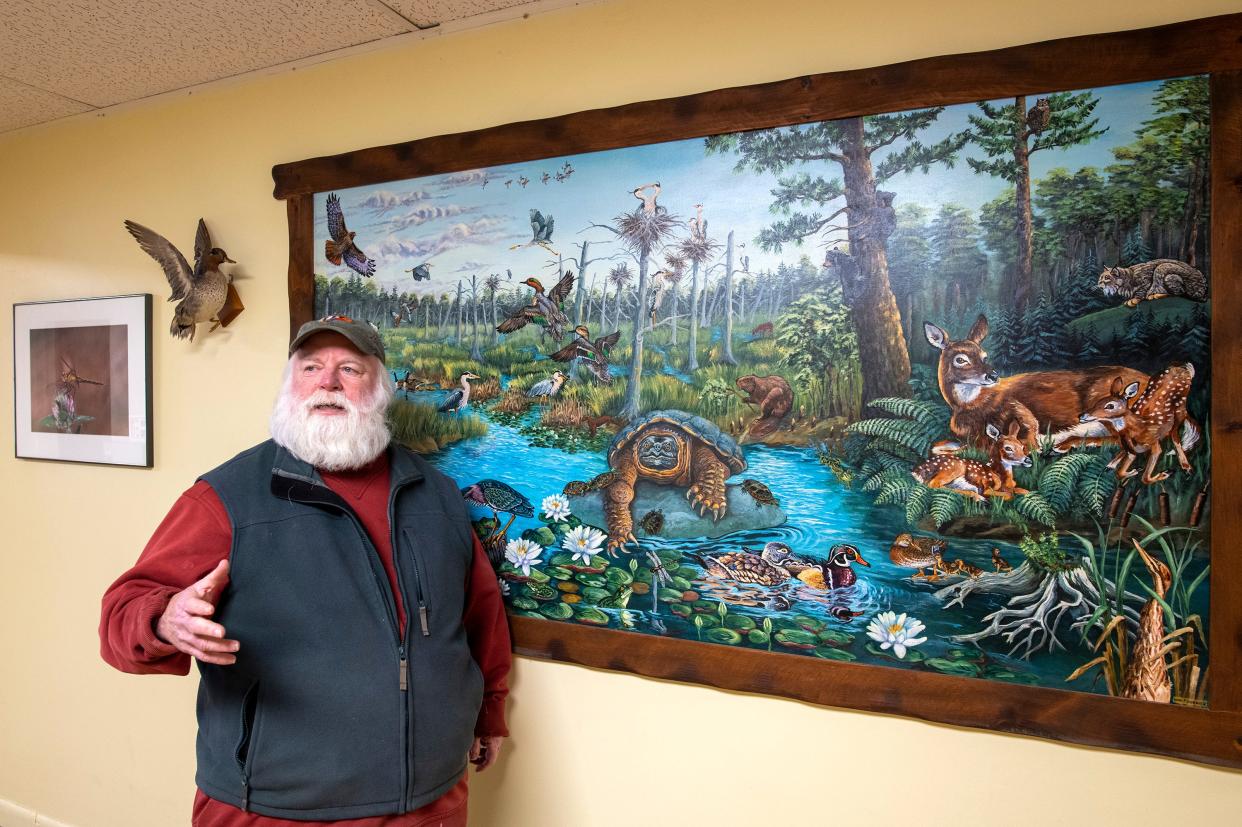
Early each spring, as the earth warms and the ground sheds its icy shell, warm rain begins to fall, and magic happens.
There is no set date or time for what is called “big night,” but every year as long as anyone can remember, on a certain night the annual migration of amphibians begins — salamanders of various kinds, frogs and even toads find their way up from underground winter homes where they hibernated to vernal pools in the forest.
Vernal pools are isolated low areas in the ground temporarily filled with melting snow and spring rain.
The temperature determines when they head off on their spring quest.
David Small, president of the Athol Bird & Nature Club, has watched this migration unfold for much of his life. He said it begins near the end of March during the first steady rainstorm when temperatures rise into the high 30s or 40s, waking the amphibians from their slumber and causing then to rush pell-mell to their favorite vernal pools where they sing and dance to signal the opposite sex that it is time to mate.
Small worked for the state for 35 years, retiring as assistant regional director for the state Department of Conservation Resources at Quabbin Reservoir. He honed his skills observing nature at the reservoir but has been involved with the study and appreciation of nature most of his life.
In 1963 while a student at Athol Junior High School, Small joined the Athol Bird & Nature Club. The club had been founded by teacher Robert Coyle. Coyle served as president of the club. When he retired in 1988, Small took over the post.
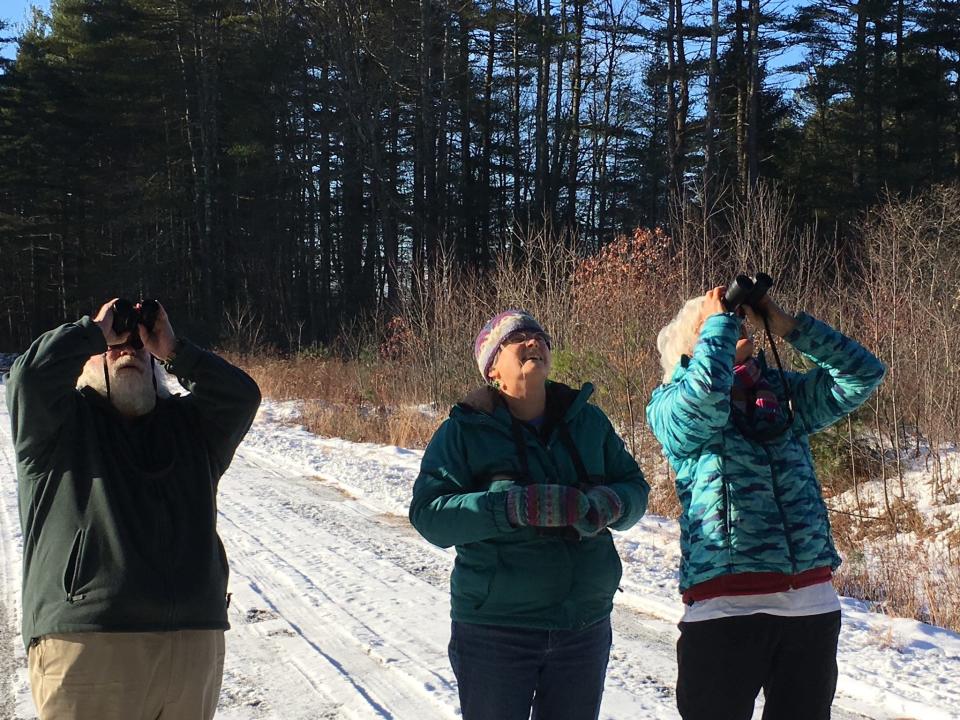
Flocking Together for a Common Interest
Over the first 25 years, Coyle oversaw moving the club from a small school-centered activity to a community-connected organization that now has nearly 250 members.
Small said some of the most active members are friends he met in the club as a kid. Over the years they have shared many adventures on trips locally and around the country chasing rare birds or just trying to expand their knowledge of nature. They regularly work together, drawing on what they learned from Coyle to provide science and nature programs for the community.
The Athol Bird & Nature Club’s headquarters are in a former schoolhouse on Main Street in Athol that the club rents from the town. The four-room school built in 1889 has been renovated to provide handicapped access.
Known as the Millers River Environmental Center, the building is filled with the club’s collections and provides office and meeting space for the club.
The center is at 100 Main St., Athol. On its webpage, www.atholbirdclub.org, you can find listings for upcoming programs and how to sign up as a member.
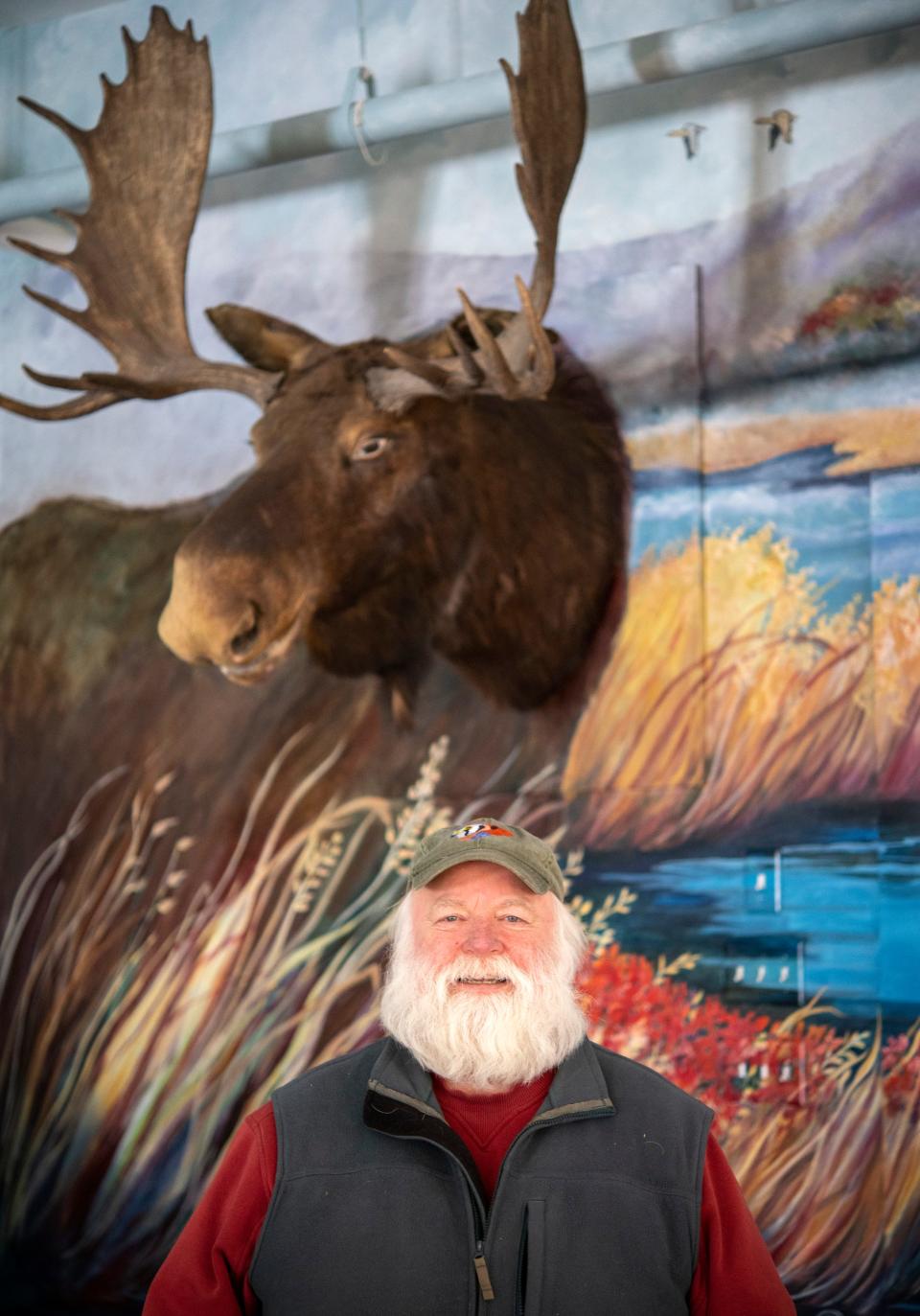
The Millers River is just a short walk through Cass Meadow from the Environmental Center near where it is met by the Tully River. Along that section of the river, club members made one of their biggest finds when they discovered the largest number of American rubyspot damselflies found in a single place in Massachusetts.
There are always great moments to be found out in nature. The club is always looking for new opportunities to bring those discoveries to the public.
The pandemic, although difficult for many businesses and organizations, allowed the club time and opportunity to make significant improvements to the environmental center. The club wired its meeting room to allow online access for its programs, provided space for the installation of works by local artists and improved the displays of its collections. Geology collections donated by Coyle and geologist Paul Kachinsky have been moved into the basement where programs can be held, and a geology library is now available for research.
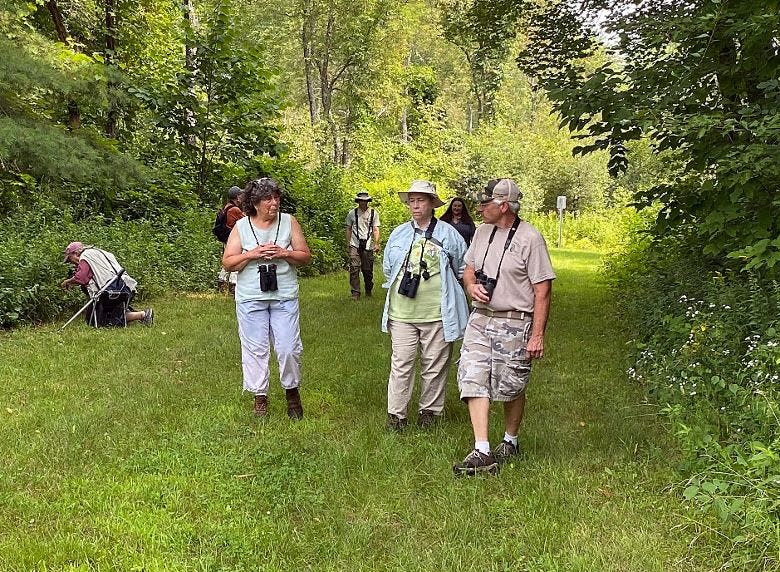
Discovering Nature
The programs offered by the club itself, and in conjunction with other nature and conservation organizations in the area include bird, butterfly and dragonfly walks, and the study of moths, one of Small’s particular interests.
This year the club marks the 60th anniversary of its founding. The club hopes to hold events throughout the year to mark the milestone.
Among the efforts underway is to link displays and artwork people see in person at the environmental center with the club’s website. Videos are being prepared to explain what can be found in the wildlife display cases. There are also QR codes on some of the paintings in the center that allow visitors to use their cell phones to access further information.
Among the paintings are those created of local wildlife by local artist William Fournier, a former Gardner police officer who built rafts and blinds to allow him to float around in swamps and get a good view of wildlife. Works by Royalston artist Sonja Vaccari are also on display.
The outside of the building is ringed by murals by local artist M.E. Kane.
As a nod to efforts to make the region more environmentally sustainable, the club has an electric vehicle charging station in the parking lot.
Although the club is best known for its members interests in birds, dragonflies and butterflies, geology has always been an important focus. Coyle was a geologist first. Small said he would begin each fall semester teaching the students geology, then they moved on to birds and insects.
“On Jan. 1, you started your year’s (bird) list,” he said.
At the end of the year the lists were tallied, and the top birder’s name was placed on a plaque, which is on display in hallway in the environmental center.
Coyle collected many of the club’s bird taxidermy specimens from students who found them dead on the road or in the woods.
“My mother was horrified,” Small said. “Being Irish, there was a lot of superstition about dead birds.”
But it was part of being in the club.
“If you find a dead bird, well …” Small said.
The club has a display case on loan from the Forbush Memorial Library in Westminster of birds collected by noted ornithologist Edward Howe Forbush.
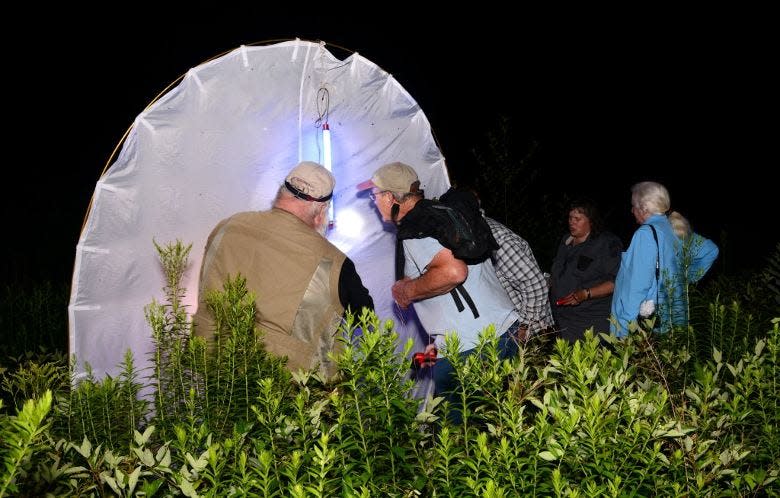
There is also a specimen of an anhinga, a water bird found mostly in South America and coastal southern United States and Central America. The specimen, which came from the Smith College collection, is believed to have been collected by famed artist and naturalist John James Audubon.
A new addition is a large, mounted bull moose head, which is displayed on the wall in the main meeting room as part of a large mural painted by artist Susan Marshall.
The building offers multiple teaching moments.
“The whole idea is to give people the tools they need to explore their areas of interest,” he said.
The club attracts people of all walks of life and every level of knowledge. They all find a place to learn. It is a tradition dating back to the founding of the club.
“Everyone was equal in the room,” Small said. “We never made a distinction.”
Small said the club encourages people with all levels of knowledge to consider leading trips, which often become a combined effort of all those attending.
“Some of the best trips I have been on we doped stuff out together,” he said.
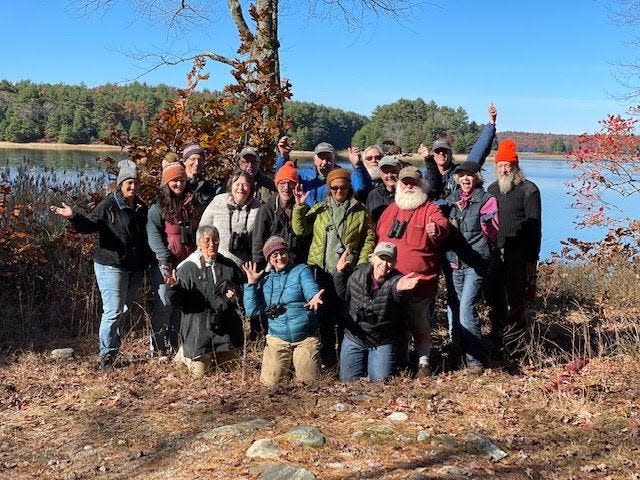
Waiting for Their Big Night
Many opportunities for observing nature open up in the spring but continue through the summer. “Big night” can be viewed by anyone adventurous enough to go out at night in the rain. The vernal pools can be located ahead of time by observing depressions in the ground during the winter that are filled with water or ice.
The deeper the better for the frisky reptiles, because if the pools dry up before the eggs hatch, they won’t survive.
The reptiles face other threats as well as the migration often takes them across busy roads. Many are killed each year but there is an ongoing effort to find ways to find ways to make roads safer not only for the big night creatures but wildlife in general.
“We’ve made a lot of progress in the state over the years,” Small said.
The state, he said, has been collecting data on places where wildlife species are at risk and wildlife experts and highway engineers have been working together to reduce risks as roads are rebuilt or repaired.
One of the first efforts was on Henry Street in Amherst in 1987. An environmental group in England heard residents concerned about protecting salamanders would go out in the rain and carry creatures to safety. The result was a grant to build tunnels that are still used by amphibians today.
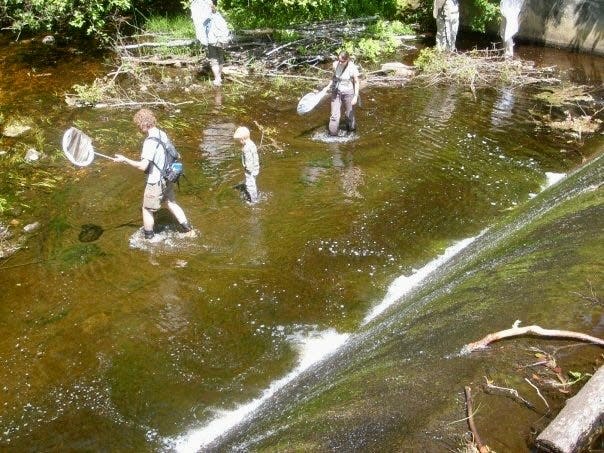
Conserving Nature
Kristen Pennucci, communications director for the state Department of Transportation, said the MassDOT has had a partnership for more than a decade with the state Division of Fisheries and Wildlife to find ways to incorporate natural resource protections into transportation planning. They include landscape designs to improve the safety of wildlife.
This improving bridge and culvert designs, dry wildlife tunnels when possible and the instillation of cameras to document wildlife passage.
Pennucci said the state has also worked on conservation efforts to improve sites where peregrine falcons nest on bridges and donated construction materials to create offshore reef habitat.
The stirring through the spring of the salamanders and frogs is part of the arrival of many species, including birds finding their way north to their summer breeding grounds.
The first spring birds to arrive in Central Massachusetts are normally the red-winged blackbirds.
“The red-winged blackbird is a true harbinger of spring,” Small said. “In mid-February they begin arriving on their territories. The males are back first. Then the females.”
Other wildlife follow.
Hawks migrate through Central Massachusetts from March through May and again in September through November.
Small said the club hopes to set up a hawk watch this year near Adams Farm on Bearsden Road. The farm overlooks the Millers River Valley with extensive views to the west.
Small said climate is having an effect on familiar species in Central Massachusetts, but there still many to see.
While changes are happening, the club continues to do what it can to connect people to the natural world outside their door and hopefully develop an appreciation of the plants and wildlife found there.
This article originally appeared on Telegram & Gazette: Athol Bird & Nature Club shares deep love of nature, wildlife

